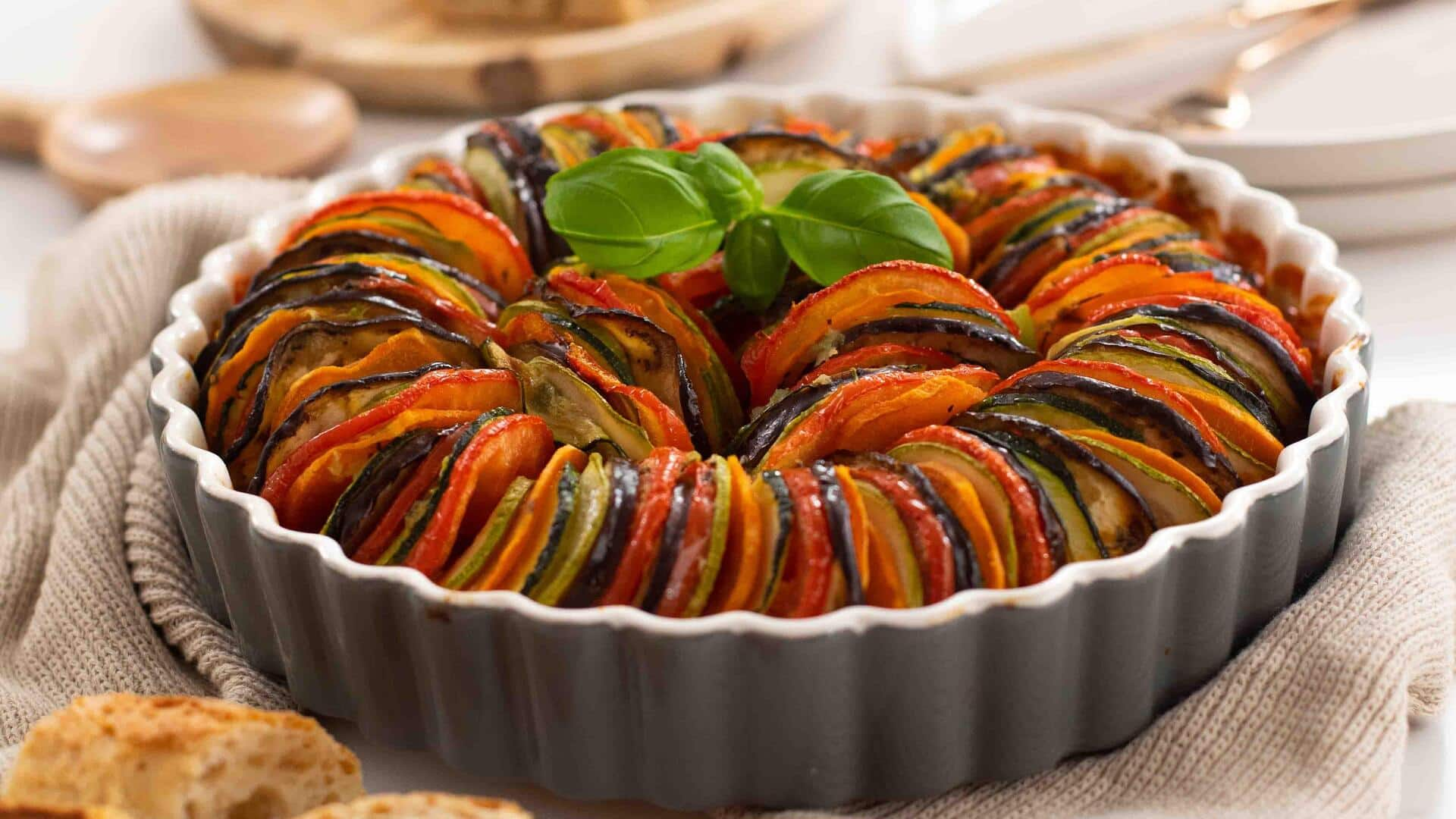
French ratatouille's evolution: From peasant stew to culinary icon
What's the story
From a humble peasant stew to a celebrated culinary icon, ratatouille has come a long way. The traditional French dish originated in the Provence region of France, where farmers prepared it with fresh vegetables during the summer months. Over time, this simple vegetable medley became popular and graced gourmet kitchens around the world. Its evolution mirrors shifts in culinary practices and appreciation for plant-based dishes.
#1
The humble beginnings
In fact, ratatouille in its early days was more of a practical solution to use surplus vegetables. Farmers would pick up tomatoes, zucchini, bell peppers, and onions to make a wholesome meal. This rustic dish would be slow-cooked for flavors to develop and to use what was easily available. It was an economical way to feed families and reduce waste.
#2
Rise in popularity
As French cuisine went international, ratatouille started finding a place on menus outside of Provence. From chefs, who loved its simplicity and versatility, to food bloggers, who experimented with its presentation and seasoning techniques, the dish caught the attention of many. Ratatouille appealed to those looking for healthy eating options that show off fresh produce. Its popularity also aligned with Mediterranean diets' health benefits.
#3
Influence of modern cuisine
Modern chefs have reimagined ratatouille by incorporating contemporary cooking methods and artistic plating styles. Some versions feature layered arrangements or are deconstructed into separate components before serving together on one plate. These innovations showcase how traditional recipes can be adapted without losing their essence, while appealing to diverse palates around the world.
Tip 1
Cultural impact through media
The cultural impact of ratatouille extends far beyond dining tables, thanks largely to media portrayals, like films showcasing this iconic dish's significance within French culture itself. Or even globally through animated storytelling mediums, introducing audiences everywhere not just visually but emotionally. Connecting them back again towards appreciating classic yet timeless recipes like these, once more today than ever before!